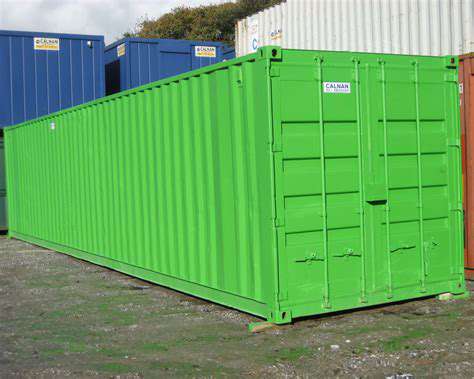Pantry Organization Hacks: Declutter Your Kitchen

Decluttering Your Home: A Step-by-Step Guide
Decluttering your home might seem overwhelming at first, but taking it one step at a time can make all the difference. Begin with a small, manageable space—like a single drawer or shelf—to build confidence and momentum. Tackling one area before moving to the next prevents the process from feeling insurmountable. Setting aside dedicated time each day or week ensures steady progress without burnout. This measured approach not only keeps motivation high but also leads to lasting results.
As you work through each space, handle every item individually. Ask yourself two key questions: Does this serve a practical purpose? Does it spark genuine joy? If the answer to both is no, it’s likely time to part ways. Releasing unused or emotionally neutral items creates physical and mental space for things that truly matter. Remember, holding onto clutter often weighs us down more than we realize.
Discarding Items: The Art of Letting Go
Deciding what to discard is often the hardest part of decluttering. Start by identifying broken, damaged, or obsolete items—these should be the first to go. Objects that are beyond repair serve no purpose and only take up valuable space. For outdated but functional items, consider donation as a way to extend their usefulness while lightening your load.
Sentimental items require special consideration. While memories matter, physical objects don’t define who we are or the relationships we cherish. Evaluate whether keeping something truly honors the memory or simply occupies space. Photographing meaningful items before letting them go can preserve the memory without the physical burden.
Environmentally conscious disposal matters. Good condition items can find new life through donation or resale. Not only does this approach reduce waste, but it might also provide funds for items you genuinely need. Local charities, online marketplaces, and recycling centers offer multiple pathways for responsible disposal.

Maintaining Organization: Simple Habits for Long-Term Success
Decluttering and Assessing Your Space
The foundation of an organized pantry begins with a complete reset. Remove every item, checking expiration dates and condition. This process reveals exactly what you own and highlights inefficient storage areas. Ruthless decluttering prevents the someday I might need this trap that leads to overcrowding. With only useful items remaining, you can design a storage system tailored to your actual needs.
Evaluate your current storage against your remaining items. Deep shelves might need dividers, while shallow ones could benefit from tiered organizers. Vertical space often goes underutilized—stackable solutions or hanging racks can dramatically increase capacity. The goal is creating a system so intuitive that maintaining order becomes effortless.
Choosing the Right Storage Solutions
Visibility and accessibility define successful pantry organization. Clear, airtight containers preserve freshness while allowing quick inventory checks. Investing in uniform containers creates visual harmony and maximizes space efficiency. For even greater functionality, implement a labeling system—whether color-coded or text-based—that works for your household.
Stackable designs multiply your storage potential, especially for bulk items. Consider specialized containers for different categories: tall jars for pasta, wide bins for potatoes, or divided boxes for small packets. The right container not only organizes but actually protects your food investment.
Implementing Effective Organization Strategies
Logical grouping transforms random storage into an efficient system. Keep baking supplies together, place breakfast items in one zone, and group canned goods by type. This like with like approach reduces search time and prevents duplicate purchases. Frequently used items deserve prime real estate at eye level, while occasional-use items can occupy higher or lower shelves.
For bulky or messy items like flour and sugar, clear bins with secure lids prevent spills and pest problems. These secondary containers also make it easy to see when supplies run low. Implementing these strategies creates a pantry that practically organizes itself through intuitive design.
Maintaining Your Organized Pantry
Organization isn't a one-time project but an ongoing practice. Schedule monthly pantry audits to check expiration dates and reassess storage needs. This regular maintenance prevents the slow creep of clutter that undermines organization. Make it a household rule to immediately put groceries in their designated spots—this simple habit prevents accumulation of random items.
Consider keeping an inventory list or using a whiteboard to track staples. This visual reminder helps with shopping and prevents overbuying. With these systems in place, your pantry will remain functional and frustration-free.
- Storing Potatoes: Prevent Sprouting
- Healthy Meal Prep for Weight Loss: 5 Days of Deliciousness
- Smart Food Storage: Keep Your Groceries Fresh Longer
- Exploring Italian Pasta Dishes: Beyond Spaghetti Bolognese
- Cooking with Instant Pot Vortex: Air Fryer and More
- Quick Weeknight Meals: From Pantry to Plate
- Instant Pot Basics: Quick & Easy Pressure Cooker Meals
- Discovering Brazilian Feijoada: A Hearty Stew
- Authentic Greek Salads: Fresh and Flavorful
- Sheet Pan Dinners for Families: Easy Cleanup
- Seasonal Cooking: Fall Harvest Recipes & Produce Guide
- Vegetarian Meal Prep Bowls: Easy and Nutritious